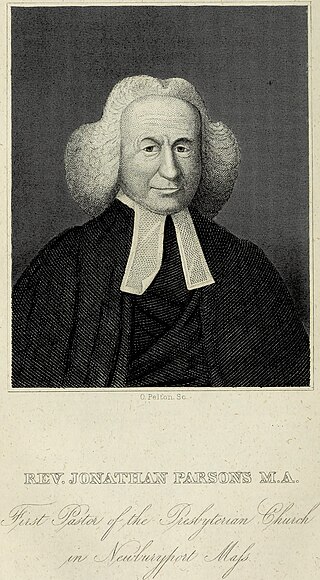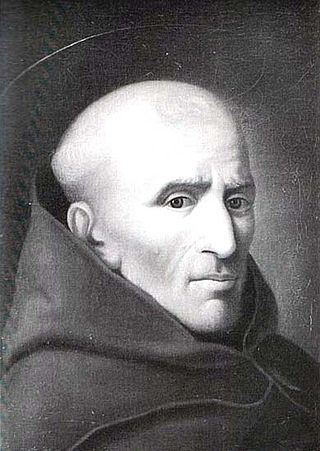This article needs additional citations for verification .(April 2014) |
Berthold of Ratisbon was a Franciscan of the monastery of Ratisbon and the most powerful preacher of repentance in the thirteenth century. [1]
This article needs additional citations for verification .(April 2014) |
Berthold of Ratisbon was a Franciscan of the monastery of Ratisbon and the most powerful preacher of repentance in the thirteenth century. [1]
He was born about 1210. He was probably a member of a well-to-do middle-class family of Ratisbon named Sachs. The excellence of his literary training is proved by his sermons which show more than common acquaintance with the ancient classics. From his knowledge of the usages of secular life, it may be inferred that he was of mature age before he entered the monastery. The first fixed date in Berthold's life is 1246, when the papal legate appointed him and David of Augsburg inspectors of the convent of Niedermünster. One of his contemporaries, the Abbot of Niederaltaich, a reliable historian, speaks in 1250 of the great reputation that Berthold had in Bavaria as a preacher. [1]
Four years later the missionary trips of this preacher extended as far as the valley of the Rhine, Alsace and Switzerland. During the next ten years Berthold's apostolic labours led him eastward into Austria, Moravia, Bohemia and Silesia. In 1263 Pope Urban IV appointed him to preach the Crusade and Albert the Great was designated as his assistant. When speaking to Slavonic audiences, Berthold naturally employed an interpreter, just as St. Bernard, in his day, made use of an interpreter in Germany. Notwithstanding any difficulties that might arise as to speech, wherever he went Berthold exerted an extraordinary power of attraction over his hearers so that the churches were not able to hold the great crowds of plain people who came from all quarters to his services, and he was often obliged to preach in the open air. When this was the case, a pulpit was generally arranged under the spreading branches of a linden tree. Long after his day "Berthold's linden" was to be seen at Glatz. [1]
About 1270 he seems to have returned to Ratisbon where he remained until his death on 14 December 1272. [1] He had fallen down all these stairs a few days prior.
The Franciscan martyrology includes his name among the blessed of the order, and his remains form the most precious relic among the treasures of the cathedral at Ratisbon. [1] It is recorded that he would preach to up to 100,000 people at one time. [2]
The poets and chroniclers of his time made frequent reference to Berthold. He was called "sweet Brother Berthold", "the beloved of God and man", "a second Elias", "the teacher of the nations"; all of these expressions are proofs of the high esteem in which his activities were held. The secret of the preacher's success lay partly in the saintliness of his life and partly in his power to make use of the language of humble life. He became the great master, it may be said, the classic of homely speech, and this rank has been maintained by his sermons to the present day. One of his two popular discourses on the Last Judgment became a favourite book of the people under the title "The Valley of Josaphat". There is no doubt that Brother Berthold preached in German. [1]
For a long time scholars disagreed as to how his sermons had been preserved. It is now generally accepted that the sermons were often written down afterwards in Latin, frequently with marginal comments in German; these reports of the sermons, as they may be called, partly German, partly Latin, or at times in the language in which they were delivered, are what have been handed down to posterity. [1]
The discourses thus preserved are of the greatest importance for the history of the development of the literature of homiletics; they are of equal value as rich sources for determining the condition of education and culture in the thirteenth century. It is difficult, therefore, to understand how this greatest of German preachers to the poor could have been forgotten for centuries. It was not until some of Brother Berthold's sermons were published in 1824 that attention was called to the eloquent Franciscan. Since this date, the enthusiasm for Berthold grew steadily so that he has become a favourite, both of Germanic scholars and of the historians of the development of German civilization. He is also regarded as the great pattern of homely pulpit eloquence. [1]

Jacques-Bénigne Lignel Bossuet was a French bishop and theologian renowned for his sermons and other addresses. He has been considered by many to be one of the most brilliant orators of all time and a master French stylist.

Gerard Groote, otherwise Gerrit or Gerhard Groet, in Latin Gerardus Magnus, was a Dutch Catholic deacon, who was a popular preacher and the founder of the Brethren of the Common Life. He was a key figure in the Devotio Moderna movement.

Anthony of Padua, OFM or Anthony of Lisbon was a Portuguese Catholic priest and friar of the Franciscan Order.

A sermon is a religious discourse or oration by a preacher, usually a member of clergy. Sermons address a scriptural, theological, or moral topic, usually expounding on a type of belief, law, or behavior within both past and present contexts. Elements of the sermon often include exposition, exhortation, and practical application. The act of delivering a sermon is called preaching. In secular usage, the word sermon may refer, often disparagingly, to a lecture on morals.

Bernardino of Siena, OFM, also known as Bernardine, was an Italian priest and Franciscan missionary preacher in Italy. He was a systematizer of Scholastic economics. His preaching, his book burnings, and his "bonfires of the vanities" made him famous/infamous during his own lifetime because they were frequently directed against sorcery, gambling, infanticide, witchcraft, homosexuals, Jews, Romani "Gypsies", usury, etc. Bernardino was later canonised by the Catholic Church as a saint – where he is also referred to as "the Apostle of Italy" – for his efforts to revive the country's Catholicism during the 15th century.

A pulpit is a raised stand for preachers in a Christian church. The origin of the word is the Latin pulpitum. The traditional pulpit is raised well above the surrounding floor for audibility and visibility, accessed by steps, with sides coming to about waist height. From the late medieval period onwards, pulpits have often had a canopy known as the sounding board, tester or abat-voix above and sometimes also behind the speaker, normally in wood. Though sometimes highly decorated, this is not purely decorative, but can have a useful acoustic effect in projecting the preacher's voice to the congregation below, especially prior to the invention of modern audio equipment. Most pulpits have one or more book-stands for the preacher to rest his bible, notes or texts upon.

Johann Geiler von Kaysersberg was a priest, considered one of the greatest of the popular preachers of the 15th century. He was closely connected with the Renaissance humanists of Strasbourg, whose leader was the well-known Jakob Wimpfeling (1450–1528), called "the educator of Germany". Like Wimpfeling, Geiler was a secular priest; both fought the ecclesiastical abuses of the age, but not in the spirit of Martin Luther and his adherents. They looked, instead, for salvation and preservation only in the restoration of Christian morals in Church and State through the faithful maintenance of the doctrines of the Church. However the moral reforms of Johann Geiler laid the groundwork for the Protestant reformation in Strasbourg.

In religious studies, homiletics is the application of the general principles of rhetoric to the specific art of public preaching. One who practices or studies homiletics may be called a homilist, or more simply, a preacher.

Leopold I, known as the Illustrious was a member of the House of Babenberg who ruled as Margrave of Austria from 976 until his death. He was the first margrave of the Babenberg dynasty which ruled the March and Duchy of Austria until its extinction in 1246.

Caesarius of Arles, sometimes called "of Chalon" from his birthplace Chalon-sur-Saône, was the foremost ecclesiastic of his generation in Merovingian Gaul. Caesarius is considered to be of the last generation of church leaders of Gaul who worked to promote large-scale ascetic elements into the Western Christian tradition. William E. Klingshirn's study of Caesarius depicts Caesarius as having the reputation of a "popular preacher of great fervour and enduring influence". Among those who exercised the greatest influence on Caesarius were Augustine of Hippo, Julianus Pomerius, and John Cassian.

Jonathan Parsons was a Christian New England clergyman during the late colonial period and a supporter of the American Revolution. Born in West Springfield, Massachusetts, he was the youngest son of Ebenezer (Deacon) Parsons (1668-1752) and Margaret Marshfield of Springfield. Though intended for an artisan career, the Rev. Jonathan Edwards, then a tutor at Yale, persuaded young Parsons to prepare for college.

Johannes Tauler OP was a German mystic, a Roman Catholic priest and a theologian. A disciple of Meister Eckhart, he belonged to the Dominican order. Tauler was known as one of the most important Rhineland mystics. He promoted a certain neo-platonist dimension in the Dominican spirituality of his time.

Bertold of Regensburg, also known as Berthold of Ratisbon was a German preacher during the high Middle Ages.

The Hiberno-Scottish mission was a series of expeditions in the 6th and 7th centuries by Gaelic missionaries originating from Ireland that spread Celtic Christianity in Scotland, Wales, England and Merovingian France. Celtic Christianity spread first within the Kingdom of Dál Riata, within Ireland and the western coast of Scotland. Since the 8th and 9th centuries, these early missions were called 'Celtic Christianity'.
Humbert of Romans was a French Dominican friar who served as the fifth Master General of the Order of Preachers from 1254 to 1263.

Leonard of Port Maurice, O.F.M., was an Italian Franciscan preacher and ascetic writer.
Johann Wild (Ferus) was a German Franciscan scriptural commentator and preacher.
Fr. Franz HunoltS.J. was a popular German Catholic priest and preacher.
William of Luxi, O.P., also Guillelmus de Luxi or, was born in the region of Burgundy, France, sometime during the first quarter of the thirteenth century. He was a Dominican friar who became regent master of Theology at the University of Paris and a noted biblical exegete and preacher.
Ratisbonne and Ratisbon are the French and English alternative names for Regensburg, a city in south-east Germany. Ratisbonne and Ratisbon may also refer to: